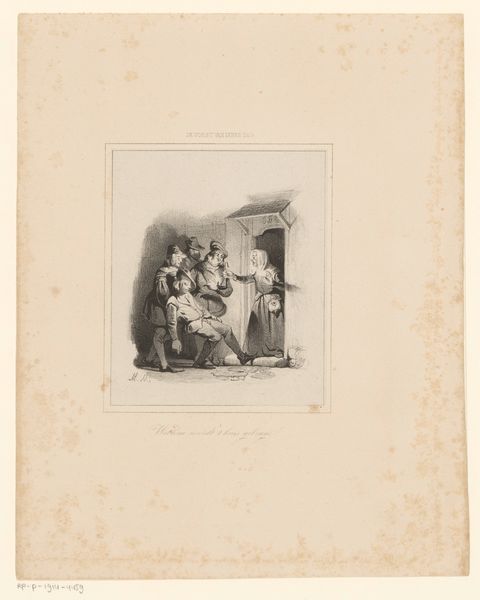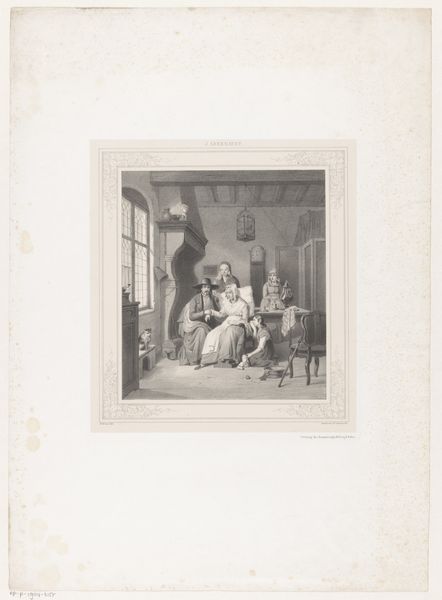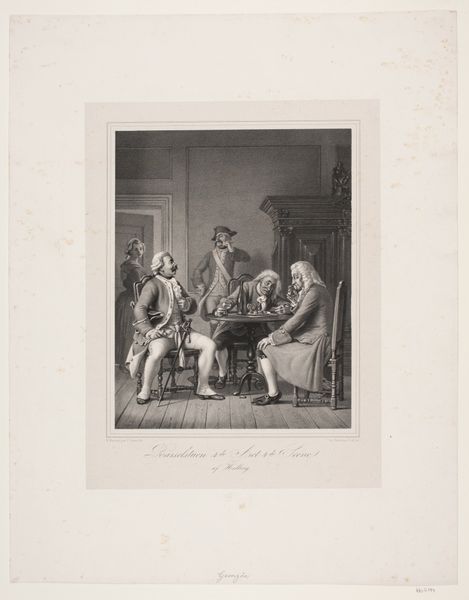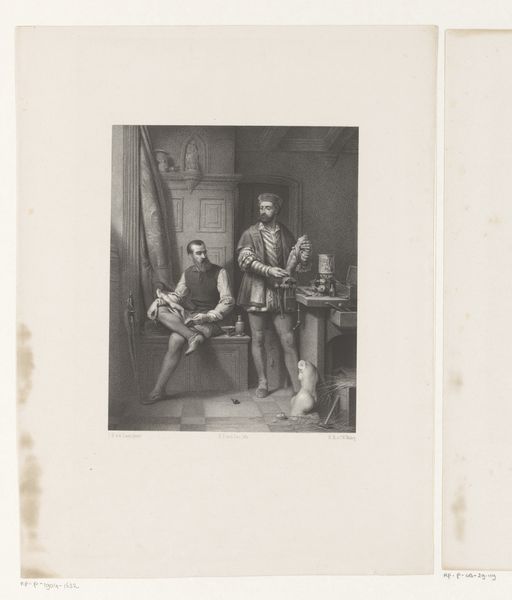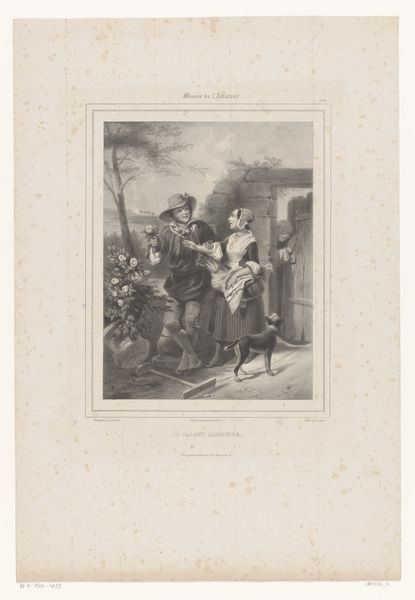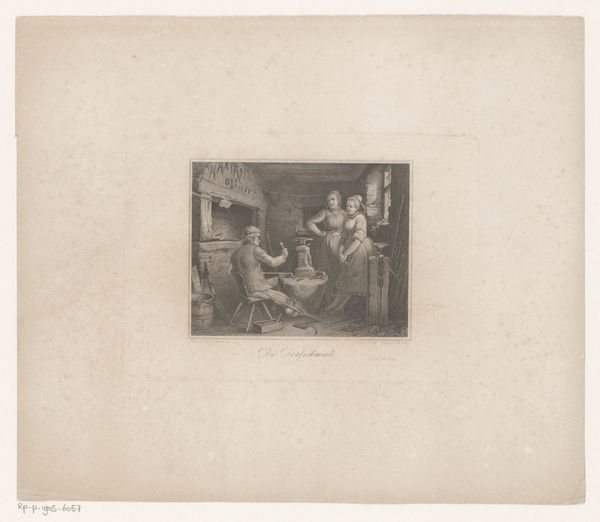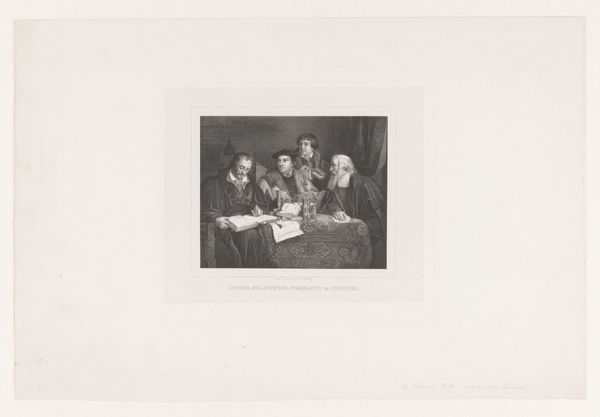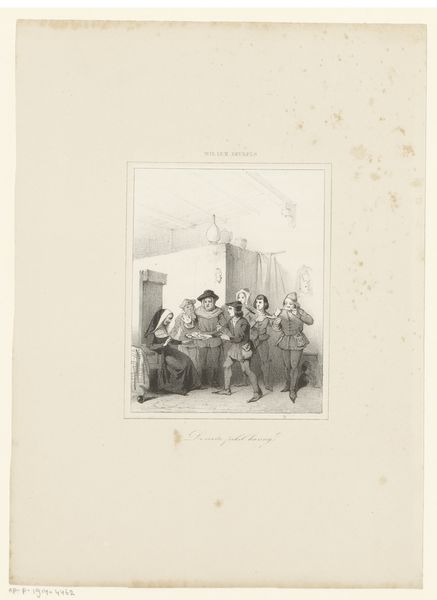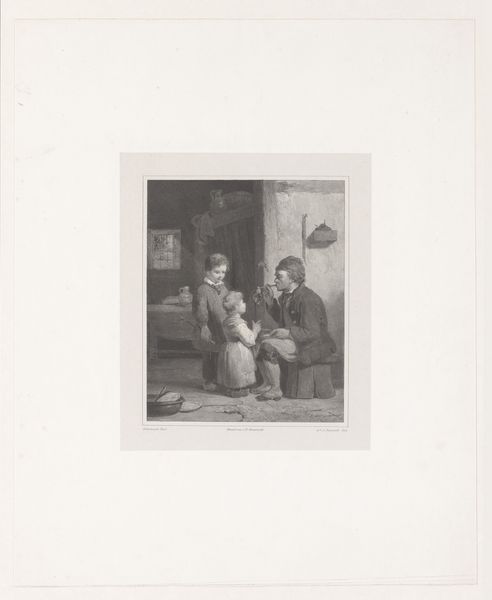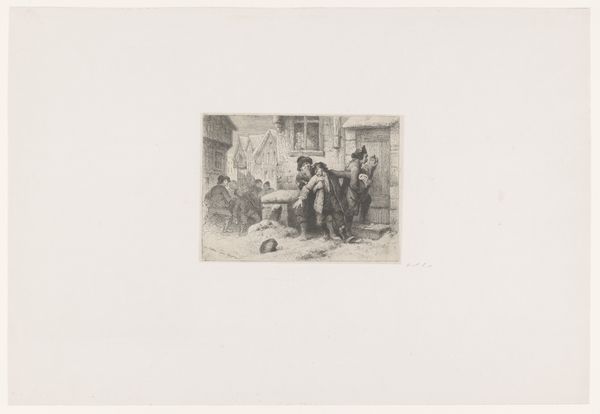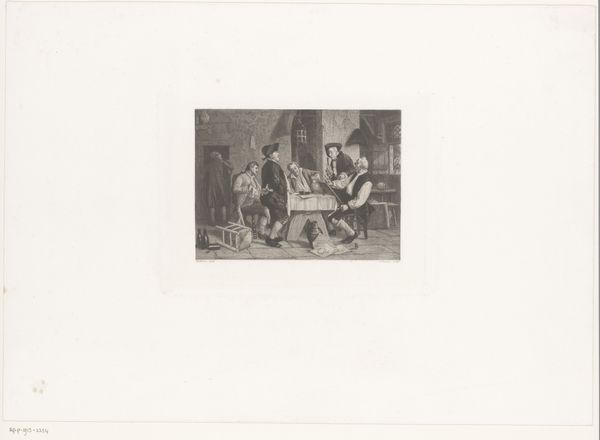
drawing, print, engraving
#
drawing
# print
#
group-portraits
#
romanticism
#
genre-painting
#
engraving
Dimensions: height 365 mm, width 275 mm
Copyright: Rijks Museum: Open Domain
Editor: So, this is "Gezelschap in een huiskamer en een glurende vrouw," or "Company in a Living Room and a Peeping Woman," made sometime between 1843 and 1853 by Johan Hendrik Hoffmeister. It looks like an engraving. There's a certain rigidity in the poses; the composition feels very deliberate. What do you see in this piece? Curator: The rigidity, as you call it, is interesting, isn't it? Look at the role of the 'peeping woman'. Does her gaze subvert or reinforce the power dynamics at play within the domestic sphere depicted here? How does Hoffmeister employ this subtle element to engage with issues of female agency or restriction prevalent in 19th-century Dutch society? Editor: So, you’re saying it might not just be a simple genre scene, but could be a commentary on gender roles at that time? Curator: Precisely. Romanticism, while often celebrated for its emphasis on emotion, frequently served as a vehicle for upholding existing social structures. By presenting this scene within the framework of romanticized genre painting, is Hoffmeister perhaps critiquing the limited scope afforded to women within these supposedly idyllic settings? And what about the choice to portray these figures with such formality? How does that relate to the broader political landscape? Editor: I didn’t consider that! The setting looked domestic and quaint at first glance, not political at all. Curator: Look closer. Are there subtle details – the arrangements of figures, the symbols within the room – that challenge that initial impression? Art is rarely created in a vacuum; it always exists in conversation with its cultural and historical context. What might the "glurende vrouw", as you so beautifully call her, know? What is she prevented from acting upon? Editor: I see. Considering the time period, the woman probably had little to no power within the social sphere, and perhaps is only afforded power through observation, acting as a knowing critic outside the men’s conversation. Curator: Exactly! And that act of observation is now the way you are interpreting it and sharing the sentiment in a contemporary dialogue with history! That is the exciting part for me. Editor: Wow, thanks for shedding new light. Now, when I look at this work, I see so many possibilities for further consideration, beyond a quiet domestic scene.
Comments
No comments
Be the first to comment and join the conversation on the ultimate creative platform.
